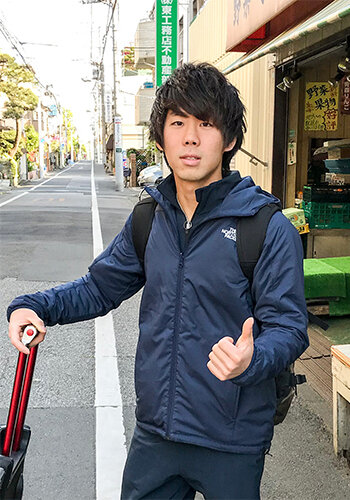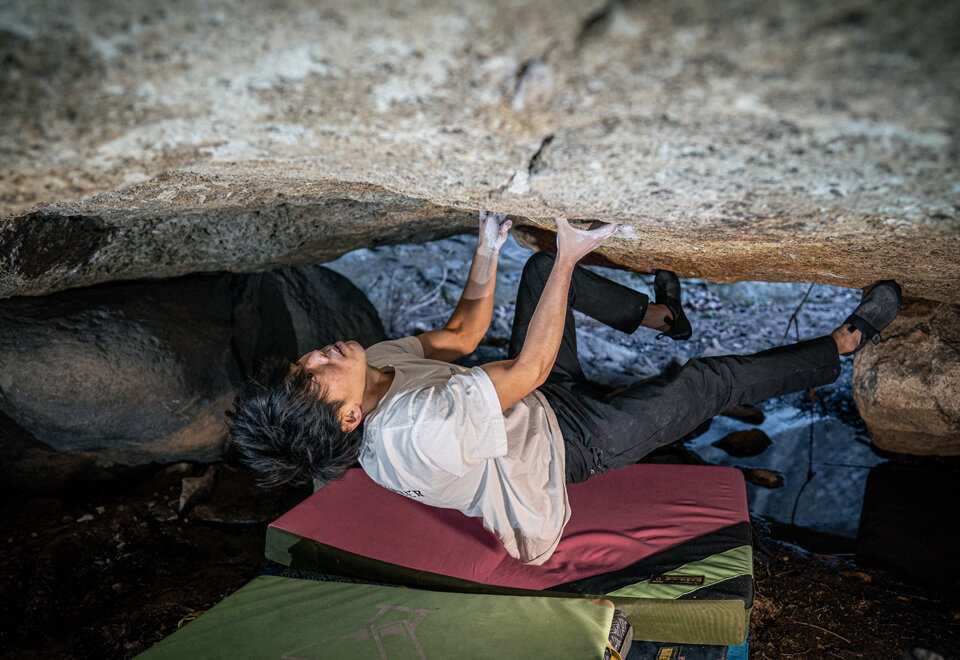When and how did you get into climbing? What keeps you interested? What fascinates you?
At first, I went to a climbing gym as part of my training for mountaineering, which I often did with my father, but gradually I became more into climbing and shifted gears. I started climbing seriously when I was around 10 years old, mainly competing until I graduated from high school, and after entering university, I began to take an interest in outdoor climbing and my activities expanded.
The appeal of climbing is that the sense of accomplishment you feel when you succeed on a route you have focused on is indescribable. In addition, the process of success is also very interesting. Climbing requires completely different techniques and thinking for each route you attempt, so you have to apply your own logic and trial and error each time. Therefore, I think that one of the real pleasures of climbing is the process of gradually coming to be able to handle things that were completely impossible at the beginning by gradually combining pieces.
Who was your childhood hero and do you consider yourself a role model now? Does it influence you at all that other people look up to you?
I used to watch outdoor climbing DVDs from overseas with my friends when I was a kid, and Chris Sharma and Daniel Woods were climbers that I admired (although I didn't have much outdoor climbing experience at that time). I liked their strong physicality and full-body climbing style, and there was a time when I tried to emulate that style of climbing, but I have now developed my own style of climbing and will continue to do so in the future. If I am a role model for others, I am very happy to be one, but I hope that everyone else will also value the good qualities that they have in themselves.
What have been the most important milestones in your life so far, both in climbing and in everyday life? And did you recognize them immediately as such or only later on?
My biggest milestone was my Rocklands tour when I was 22 years old. This was my first overseas tour. At the time, I was close to graduating from university, and I was considering joining a general company, but this tour changed my course drastically. After returning home from South Africa, I couldn't get that view of endless rock formations out of my head, and my desire to see more of the world and test my climbing skills grew stronger, so I decided to work in the climbing industry, where it was easier to take long vacations. Since then, with the support of many people, I have visited climbing areas around the world such as Bishop, Magic Woods, and Colorado to challenge myself with hard lines. If I hadn't visited Rocklands, I wouldn't have known about these worlds, so that tour was a really valuable experience that changed my outlook on life.
What were your greatest failures / setbacks / injuries? How did you cope with them and how did you come back from them?
I have now been climbing for about 18 years and have been fortunate enough to have never had a particularly serious injury. However, there have been a few times when I have injured my finger tendons after climbing hard projects. In the longest cases, it took more than six months to fully heal, and I was often frustrated because I could not climb as much as I wanted to while my fingers were injured. As a response to such a situation, I tried to focus on what I could do at that time and focus on strengthening it. I was training with an awareness of gripping without bending my fingers as much as possible, like in “Open Hand”, while trying not to do “Crimp”. When I am injured or have limited movement, I try not to be too pessimistic and see it as a chance to overcome something I am not good at, such as training something I don't normally do.







